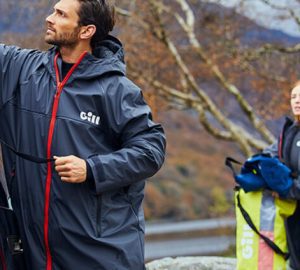
Flying without wings
In an article for the new issue of Outdoor Swimmer (7 Tips to Banish February Blues, Feb 2018), I suggested getting out of your comfort zone and trying something new to keep swimming fun. It would be hypocritical not to follow my own advice, so I signed up to swim a 200m butterfly race. I suspect my idea of fun may be a little different from some other people’s.
I realise that to open water swimmers, 200m of butterfly in a heated 25m pool might not sound much of a challenge. After all, several people and at least one relay team have crossed the English Channel swimming butterfly. How hard can 200m be?
In my experience, 200m butterfly is a strong contender for the title of toughest pool race alongside the 400m individual medley and the 1500m freestyle. It clearly doesn’t compare to swimming the Channel, on any stroke, but if you’re looking for 3 minutes of swimming pain, then the 200m fly is the thing to do.
I’ve raced 100m butterfly many times, and every time I’ve done it, the final stroke feels like the absolutely last possible stroke I could make. The thought therefore of turning around and doing it again is so daunting that I have only tried it once before, 10 years ago. My memory of that is that I felt as if I was dragging my arms through treacle for the final 50m. It was such an ordeal that I had no intention of ever repeating it.
However, on his final visit to the UK, I did a swimming session with Terry Laughlin, and he showed me a more energy efficient way to swim butterfly. I haven’t yet mastered it, but I’m practising it, and it works. It’s slower than the way I used to swim but so much more comfortable that it’s made butterfly fun.
Anyway, on 23 Jan I got the opportunity to put the new stroke to the test in a 200m butterfly race. As I lined up on the blocks I reminded myself to stay calm, relax and don’t worry about the other swimmers. After 50m I was a body length behind but still feeling strong. On the fourth length, although I’d dropped further back against the other swimmers, I was pleasantly surprised that my arms were still functioning at the point where I had expected them to start flagging. On the fifth length, I noticed I was no longer falling behind and on the sixth, the gap started to shrink. Still feeling strong, I turned for the seventh length, sped up and managed to close the gap. It was only on the final length, as I tried to sprint for the finish, that my arms started to fail me but I was close enough now for momentum to carry me through to the end. I’d survived! In fact, not only did I survive, but I was 3 seconds faster than my previous attempt from 10 years ago. The new stroke might be slower over short distances, but has proved its value at 200m. What’s more, I hardly suffered at all except when I reverted to my old ways to sprint the final yards.
Even so, my final stroke in that swim still felt like the final butterfly stroke I could possibly take and I remain in awe of people who swim long distance butterfly. Trying something new in swimming is good, and I recommend it, but there are limits. I think mine for butterfly is 200m.







